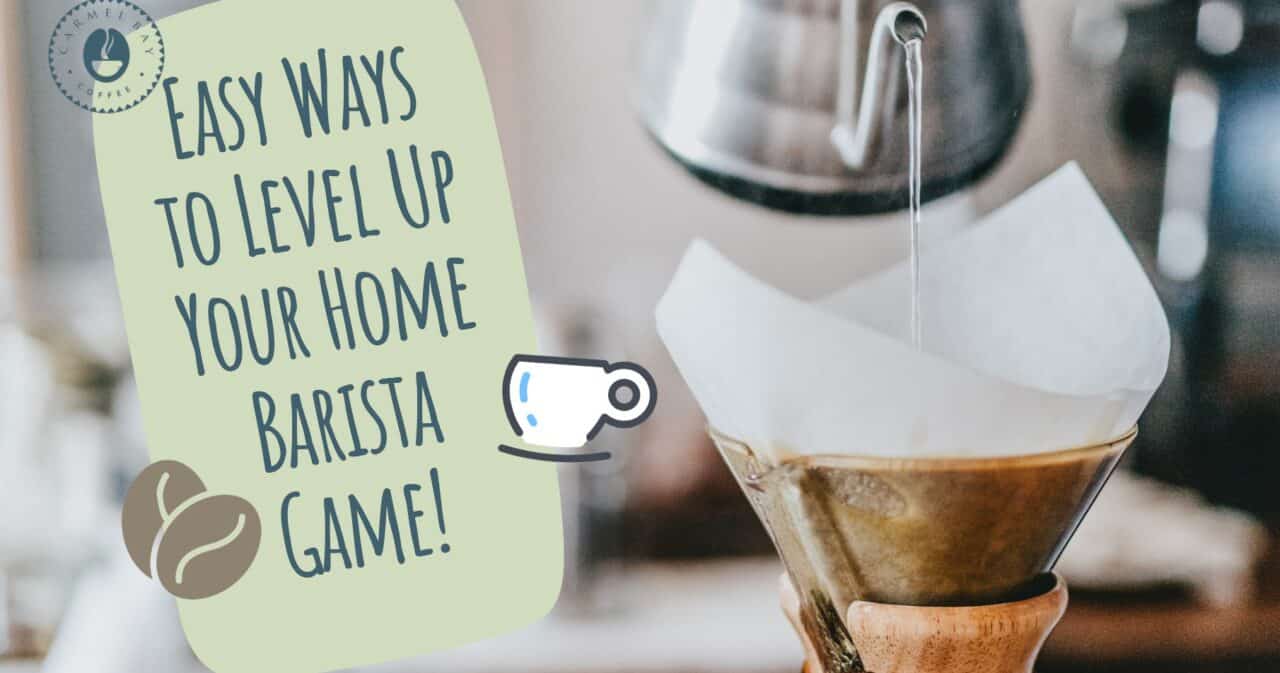Like the people of the world, coffee beans come in all different shapes and sizes, expanding worldwide.
There are thousands of different variations of coffee. If I were to explain every type of coffee bean, my laptop would run out of style. Essentially coffee beans boil down to four primary strains: Arabica, Robusta, Liberica, and Excelsa beans.
Each coffee bean has a unique personality and characteristics such as shape, size, and flavor profile.
Let’s get into the world of coffee beans!
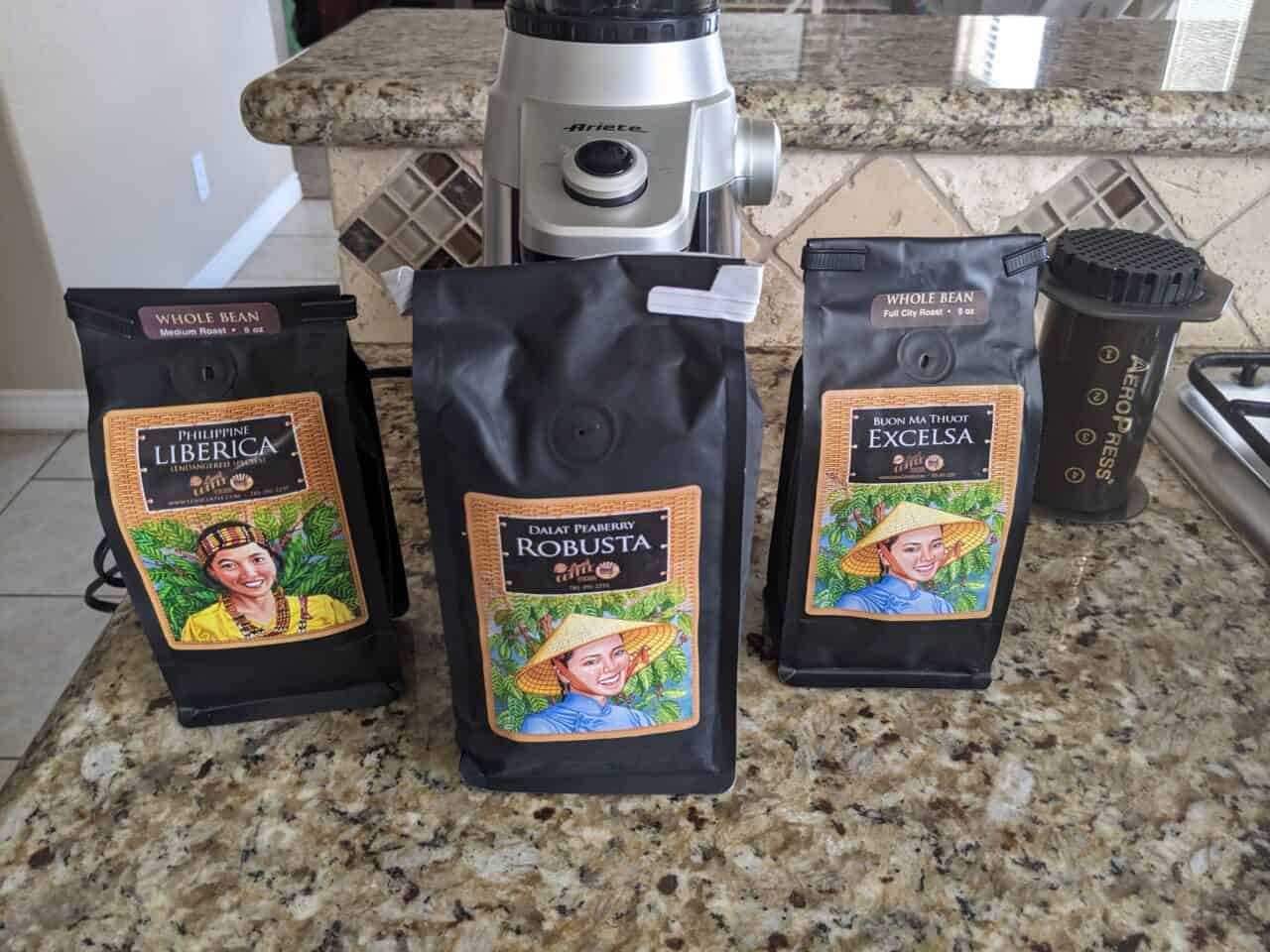
If you’d like to try these different coffee beans, you can find each different bean here:
Arabica Coffee Beans
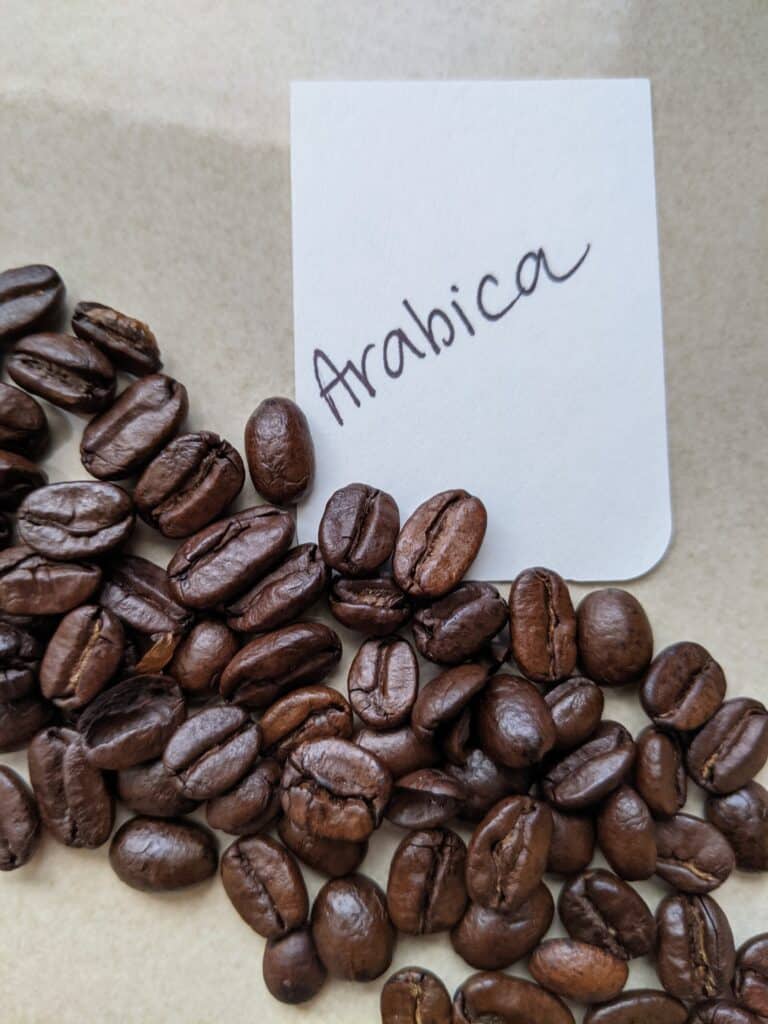
If you went to the pantry right now and checked your coffee, chances are it is either Robusta or Arabica.
Arabica coffee beans are the most popular globally, making up over 70% of the global coffee trade. Every year, over 93 million bags of Arabica coffee were sold worldwide.
History and Origin of Arabica coffee beans
Arabica coffee is praised as the first coffee ever introduced to the world.
The first step in coffee evolution. The predecessors to everything delicious about my morning routine.
Arabica coffee trees (Coffea Arabica) originally thrived in Ethiopia, which back then was called The Kingdom of Keffa. It’s rumored to have been discovered by a goat herder named Kaldi. The myth tells of Kaldi noticing abnormally hyper behavior in his goats after they feasted on the berries of a specific shrub.
Curious, Kaldi inquired to a local monastery about these berries, discovering the monastery used themselves. After boiling the berries down, they would drink the water, which would increase alertness during prayer. Later it was discovered these heightening attributes didn’t come from the berries, rather the seeds inside them.
Presently, Brazil is the top producer of Arabica coffee, contributing 2,595,000 tons of coffee per year.
In the 15th century, Arabica trees were brought to Yemen, at the tip of the Arabian Peninsula, where they continued to thrive, which is how the beans got the name Arabica, coined by Swedish botanist Carolus Linnaeus.
Since Muslims were not allowed to consume alcohol, the potent effects of coffee were wildly sought after. So when Arabian coffee shops began to gain immense notoriety, coffee quickly became a sweeping sensation around the world.
The Theroasterie goes into more detail about Arabica and Robusta.
Characteristics of Arabica Coffee Beans
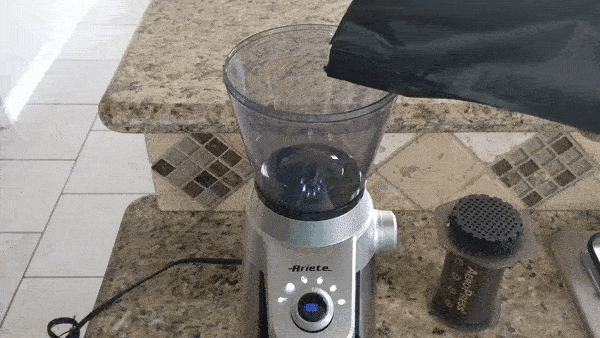
Arabica coffee beans are the best in the world, favored for creating unique, gourmet coffee blends.
These beans have a sugary nuance to them, which provides a naturally sweeter profile. In addition, they provide soft, gentle tones. As a result, arabica offers a broader and more refined spectrum of origin flavors, such as nutty, chocolaty, and fruity, than any other coffee bean.
They have a naturally higher PH balance that gives them bright and fruity flavors. They’re larger than other beans, with an elliptical shape.
The high-end quality of these beans correlates with the high elevations these plants require for growth.
Plants grow slower in higher altitudes, and because of this, the flavors have more time to refine themselves.
Arabica is painstaking to farm. High elevations mean rough mountainous terrain, which prevents maneuvering machinery from aiding cultivation. As a result, the beans are always picked by hand. In addition, the shrubs, which can grow 20 feet, require near-constant care given their proneness to diseases and mold.
Do you want to know how to find good quality coffee beans? Then, please take a look at my article, 8 Ways To Tell Good Quality Coffee Beans.
Robusta Coffee Beans
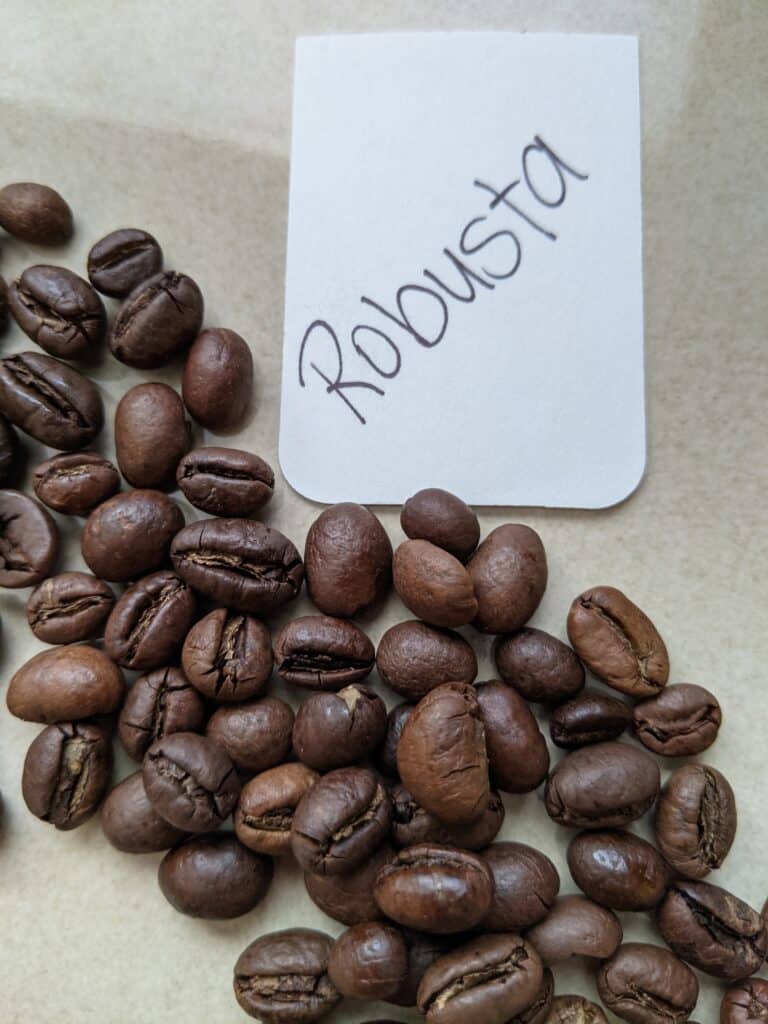
Robusta beans are commonly (and sometimes unfairly) referred to as the “ugly stepsister” to Arabica beans. These beans have a strong personality, but that isn’t always a bad thing.
If you’re a regular coffee drinker you’ve had some of these beans.
History and Origin of Robusta coffee beans
Although all strains have ties to Ethiopia, Robusta (Coffea Canephora) was discovered growing near the coastal banks of sub-Saharan Africa near the former Belgian Congo.
Robusta combines two different varieties of plants: C.c Robusta and C.c Nganda, but both are classified as Robusta.
After a disease known as “leaf rust,” it devastated and nearly wiped out all Arabica plantations. By 1879, Ceylon and the Island of Java had been completely wiped out of their arabica crop, which sparked the commercial production of Robusta by 1900. At one point, Robusta made up 80% of Java’s coffee trade.
Presently, Robusta makes up a little over 30% of the world’s coffee production. Besides Western and Central Africa, it’s grown all over Southeast Asia and a few regions in South America. The country responsible for the most Robusta is Vietnam (Followed by Brazil and Indonesia).
Vietnam produces 1,650,000 tons of Robusta per year, a significant spike from 1975 when production only yielded about 6,000 tons countrywide. This caused Vietnam’s economy to steadily boom for nearly two decades, all the way up through the ’90s.
Should you buy medium or dark roast? I dive deep in this topic in my article, medium vs. dark roast coffee beans.
Characteristics of Robusta Coffee Beans
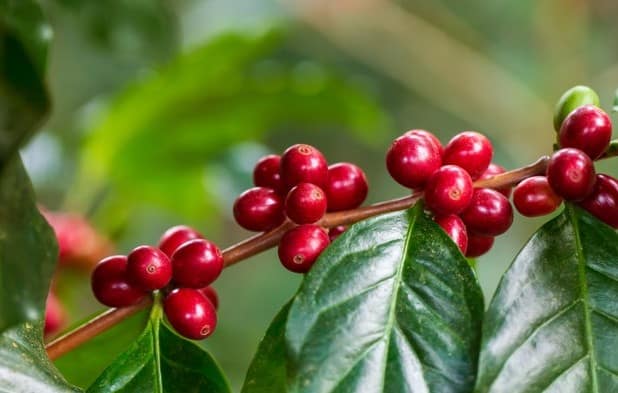
Although they are the second most popular commercially produced coffee bean, Robusta beans usually exhibit depleted flavors with harsh overtones within their profile. They have a very grainy and earthy tone which can be unpleasant.
High-quality Robusta can produce a thick and surprisingly smooth texture, which is perfect for espresso blends. But overall, its flavor profile has been compared subtly to burnt rubber.
This might be due to the fact they have far less sugar than Arabica, which gives a bitter bite. But a good quality Robusta bean can immense depth and balanced flavor to Arabica blends.
Due to their lower quality, Robusta beans are commonly used to make flavored blends to mask their harsh taste. Some roasters have also been known to cut their Arabica blends with cheap Robusta beans as a filler to save a buck.
Robusta beans are much lower in price than other varieties. Some people refer to them as “grocery store “coffee because roasters that mass-produce coffee beans often use Robusta for their cheaper costs.
It’s best to avoid dark roasted Robusta beans. Dark roasts lose most of their origin flavors and oils.
Since Robusta already lacks flavor, a dark roast can cause your coffee to taste like a burning tire (not that bad, but you know what I’m saying).
But what these tough little beans lack in taste, they make up in caffeine.
Robusta has twice the caffeine of any other coffee bean, guaranteed to ignite your synapsis like a rocket ship.
Although, the last thing I need is more caffeine!
Robusta gets its name from the integrity of the plant. It’s literally robust. A title that’s truly earned. Thriving in sweltering climates, these delicious plants are incredibly resilient to invasive elements such as disease and pests.
In addition to their resilience, the terrain in which they grow is much less demanding. They are farmed at lower altitudes on flatter land. This allows machines to help with cultivation.
Robusta plants mature much quicker than others and produce larger yields. Sometimes in as little as six months!
Liberica Coffee Beans
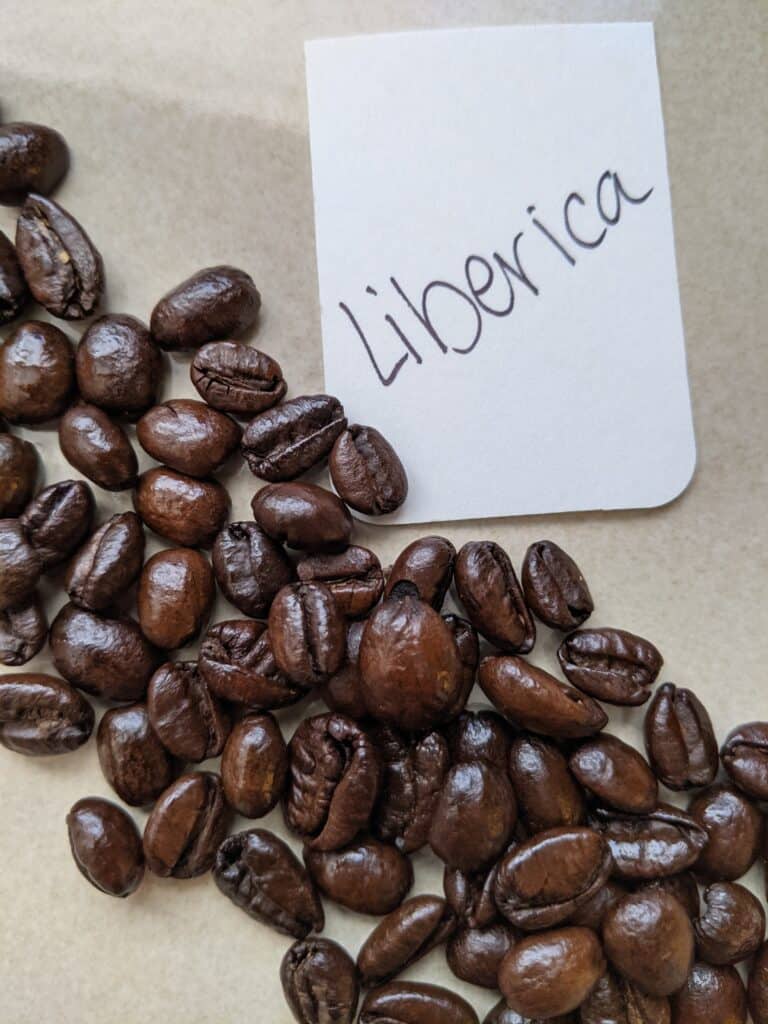
While Arabica and Robusta coffee beans are the world’s two primary contenders, Liberica remains a sleeping dragon in the realm of coffee.
Whether you’re a coffee aficionado, or just an adventurous spirit seeking variety, Liberica beans hold the flavors and the rarity that should help tickle that fancy.
History and Origin of Liberica coffee beans
Initially discovered in Liberia, from which it’s named after, Liberica is some of the rarest coffee beans on earth. So rare that they only make up less than 2% of the global coffee trade.
It wasn’t until Liberica reached the Philippines that coffee was first commercially produced.
After a global pandemic of leaf rust destroyed most Arabica coffee crops worldwide, threatening the collapse of the coffee industry entirely, Liberica beans were quickly farmed as replacements. The success of these rare beans caused a comfortable economic boom.
Given the plants’ particular preferences, it was grown in two main provinces, Cavite and Batangas, which at the time were American colonies, which turned into an issue after the second world war.
After WW2, the Philippines gained their independence, severing American influence. This caused the United States to place aggressive embargos on their Liberica beans, making them difficult to export, effectively eliminating the Philippines as a competitor globally.
The restrictions were eventually lifted in 1950, but it was too late. By then, Arabica farmers had regained the reigns as dominant coffee producers.
The Philippines remains the largest producer of Liberica today, followed by Malaysia and Indonesia.
Characteristics of Liberica Beans
Liberica beans are much larger than Robusta and Arabica and have an asymmetrical shape. Which is incredibly unique for coffee beans.
The plant is much larger as well, growing as high as 65 feet! The bearing fruit tends to be significantly more enormous as well. Their rarity stems from the problematic farming and processing required.
These are stubborn plants that only grown in awfully specific areas.
Because of this, Liberica is often spliced with other coffee plants to help them grow quicker and easier.
But the constant hybridizing has resulted in the near-extinction of pure Liberica plants. So much so that Liberica is considered an endangered plant species.
This rarity is the driving force behind the higher price point, but if you can get your hands on Liberica beans, I highly recommend giving them a test drive. There’s a reason they were used as an Arabica alternative. Liberica has an incredibly unique set of dominant flavors.
Don’t expect this to be an average cup of joe; Liberica beans offer a vastly different experience than other coffee. It’s smokey with hints of woody/earthy undertones.
So smokey in fact that its aromas and flavors are compared to that of the tobacco plant, which gave it the nickname “liquid tobacco.”
This coffee offers robust flavors that may not be for everyone. But hey, I was not too fond of regular coffee the first time I tried it either. Some things are simply an acquired taste.
Excelsa Coffee Beans
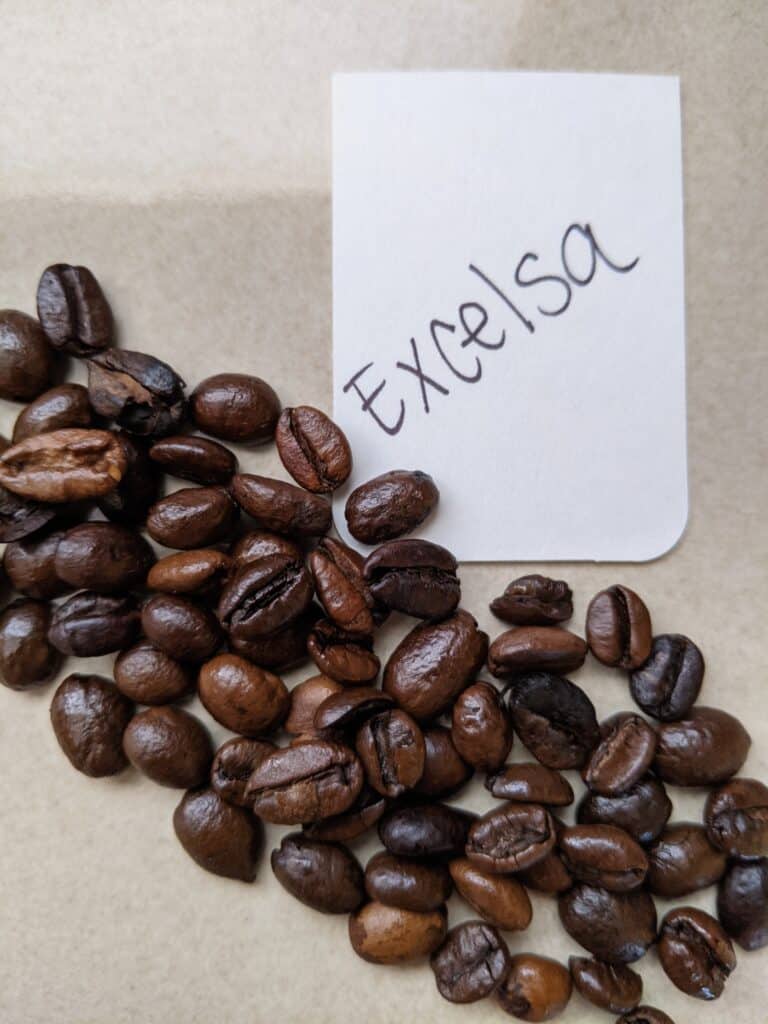
This one is for the real coffee nerds.
Excelsa is another rare coffee, yet it still claims its spot as the world’s 4th most popular coffee bean. Its origins are shrouded in mystery which attracts the peaked interest of coffee aficionados around the world.
History and Origin of Excelsa coffee beans
Excelsa shares similar origins with Liberica. It was originally discovered growing in West Africa, but it grows primarily in Southeast Asia today.
Excelsa contributes to 7% of the world’s coffee.
For decades, Excelsa was considered its own species, but in 2006 was classified as a variant of Liberica. This was due to the similar conditions the plants thrive and the similar looks of the two plants.
Their histories are so similar that it’s difficult to determine the exact origins of Excelsa.
Both plants thrive at medium elevations in a humid environment. These plants grow as high as 20 to 30 feet which bare abnormally large fruit.
The beans themselves are similarly shaped as well, often compared to the shape of almonds.
Although they look similar, their flavor profiles couldn’t be any different!
Characteristics of Excelsa Coffee Beans
Excelsa is a smaller bean compared to Liberica.
While Liberica has that wild and smokey profile, Excelsa is surprisingly sweet. Increased sugar gives a lovely sweet profile. It’s often compared to ripened fruit.
Excelsa has an impressively unique set of flavors. It takes on the traits of both light and dark roasts at the same time. Bright and fruity with a hint of tartness.
Often, Excelsa beans are used as fillers with Arabica and Robusta coffee blends. The bold flavor offers balance to a good blend. Its complexity is perfect for creating rich blends that can’t be made in the wild.
If you’re curious how these beans or different combinations taste, check out my article, all about blending coffee.
Excelsa has lower caffeine content compared to the other beans but still packs plenty of personality.
What Coffee Beans Should YOU Choose?
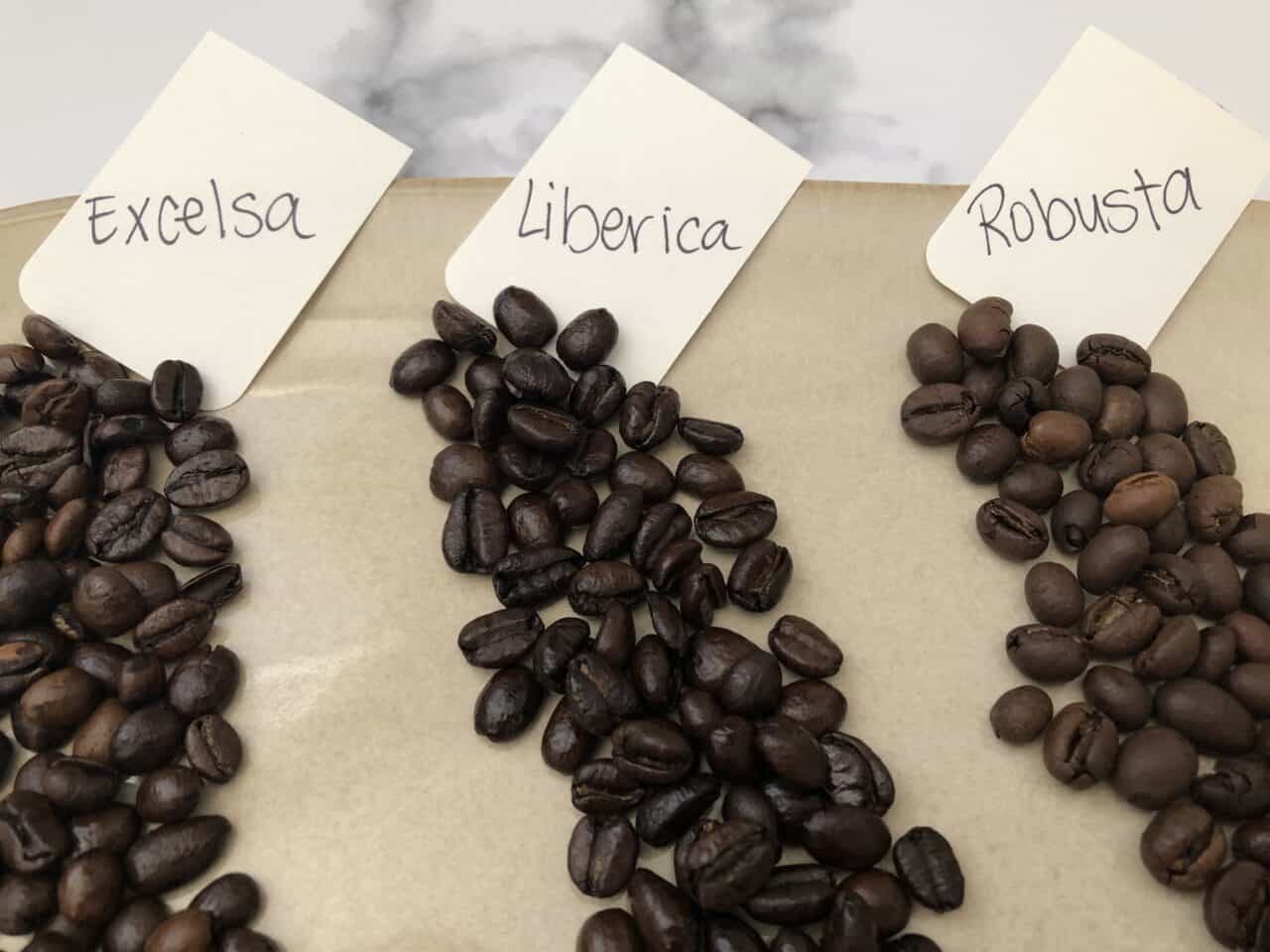
Unfortunately, this isn’t something I can research and answer for you. Choosing the perfect coffee bean is a personal choice that depends on specific preferences.
Are you looking for coffee with a smooth and pleasant taste with sugary overtones with hints of caramel? Arabica will get what you want. Perfect for a gourmet sipping coffee.
Maybe you’re seeking to impress someone special with rarity and exclusivity? Excelsa is the answer. A genuinely mysterious bean that keeps up with perfectly balanced flavor straight across the spectrum.
If you’re like me, you need a severe kick in the morning to keep a fragile schedule from shattering. Robusta will get you where you want to go. Although it lacks flavor, it contains 2x more caffeine than all the other coffee beans.
It’s all a matter of what YOU need. I recommend trying every type of bean you can if it becomes available to you.
Now that you know more about other beans besides the popular Arabica, learn to make the best coffee at home!

